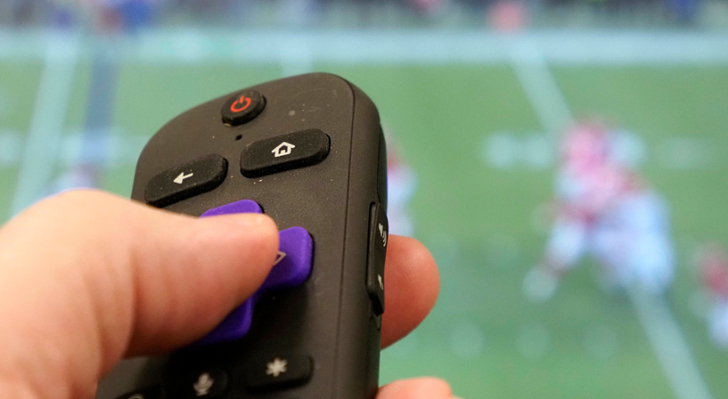Super Bowl ads: Big business and big gambles


“I only watch for the commercials.”
That’s a line many people hear when they ask someone if they intend to watch the Super Bowl. Hundreds of millions of dollars are spent putting brands and products in front of viewers of the one of the most-watched sports events in the world.
But Farmer School marketing instructor Helen Koons says that many viewers don’t actually see the majority of ads during the game. “Depending on where you're at and how much it's ‘your team’ that's playing will determine when you take a restroom break or refill the food and drink. If it's your team playing, you're laser-focused on the game and when there's a break, you think ‘I better go to the restroom fast,’ or ‘I’ve got half a drink left. I’d better go refill my drink.’ If you're someone who's just at a party because it's fun and because of this theme of Super Bowl, you're actually more likely to watch the commercials,” she said.
And while viewers might want to see an exciting, close game, Koons said that advertisers might prefer a blowout. “Nielsen data shows that when the game is becoming very lopsided, more and more people are watching the commercials.”
It’s an expensive evening for advertisers. CBS sold 30-second spots for the 2021 Super Bowl for about $5.6 million, and NBC has upped the asking price to $6.5 million this year. Koons said that what people may not know is that price varies depending on when it airs during the game, sometimes by a lot. “They're trying to predict how close the game is going to be. At the kickoff, those commercials right before kickoff, when nobody wants to miss the beginning, are expensive. The ones at halftime are usually expensive,” she said. “But for the ones between quarters, the prices vary on those based on what they're expecting the game spread to be. The variance can be almost a million dollars.”
And Farmer School marketing instructor Matthew Mulderink noted that even at $6 million, it’s not a lot of money for most advertisers. “In fact, it's a drop in the proverbial bucket, the very definition of a rounding error when considering what the biggest advertisers spend each year, and often a fraction of the larger brands' monthly search marketing spend.”
If you hear that a company in your area has bought an ad, don’t expect to see it until late in the game, Koons said. “Especially in the fourth quarter, if the game is expected to be a blowout, they will offer up cheaper ad spaces to locals at that point. Local advertising for a given city could cost a different price than local advertising in the cities that teams are playing call home.”
With the world still dealing with the coronavirus pandemic and global supply chain issues, Koons said viewers shouldn’t be surprised if ads are less about products and more about brands this year. “If I were a company's marketing team, I would be pushing brand rather than product, saying, ‘Hey, we're doing our best to keep you guys fully stocked.’ I would show the family of brands and let people know you're doing your best,” she said. “It's going to be interesting to see how the car company ads work this year because of all the problems trying to get microchips. When I was at my dealership today, they had zero new cars in their lot.”
“It is a calculus that weighs: Is this particular hyper-exposure right for our brand? Can we (and our agency) deliver entertainment?” Mulderink said. “The needle must be carefully thread; tiptoeing through a minefield with the potential of your message backfiring, seen as sappy, contrived, or worst of all, opportunistic.”
Koons said that viewers who pay closer attention to the ads can see the amount of work that goes into “selling” the advertiser. “If you look at any of the Coca-Cola commercials, the background always has reds in it. Even the people wearing clothes in the ad, they have red. If there’s an antagonist, they’ll probably be in blue, which is Pepsi's brand color. Coca-Cola’s logo is written in cursive, so you’ll often see some of that kind of fluidity in the background, whether it's in decor or furniture,” she said. “So they really do everything subtly so that it penetrates. You don't even realize how much they're reinforcing ‘Buy Coke, buy Coke, buy Coke.’”
Who watches the ads? A 2020 study found that viewers between the ages of 35 and 44 were most likely to watch ads, while those 65 and older were least likely. “A Super Bowl ad is great when it resonates with the audience, they feel the meaning behind it, and it initiates action to try or rebuy the product/service being advertised,” Koons said.
“Anything but a grand slam is a Casey-at-bat-runners-on-strikeout-disaster. What's a home run? Simply put: goosebumps, tears, or belly laughs -- a story that authentically makes sense with brands' essence; its reason for being,” Mulderink said. “The Super Bowl allows your brand to be integrated with arguably America's largest cultural event, and assuredly your ad will then be bounced around, re-shaped, meme'd, amplified, and discussed via the yet higher-reach digital platforms. If well-received, that's good. If not, it's … not.”

